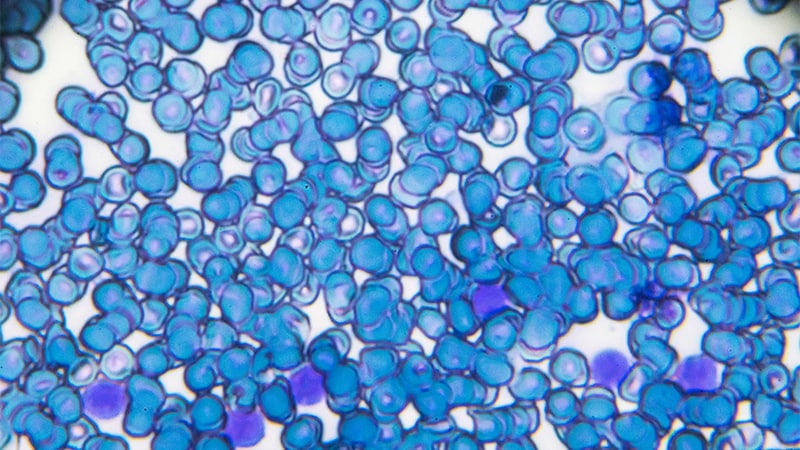The study covered in this summary was published on researchsquare.com as a preprint and has not yet been peer reviewed.
Key Takeaway
-
Donor hematopoietic stem cell infusions (DSIs) improve the efficacy of CAR T-cell therapy and overall survival for patients with B-cell acute lymphoblastic leukemia (B-ALL) who initially respond to the therapy after allogenic hematopoietic stem cell transplant has failed.
Why This Matters
-
When patients with B-ALL experience relapse after a stem cell transplant, response to standard salvage options — which include a second transplant, chemotherapy, or donor lymphocyte infusion (DLI) — is often poor.
-
Donor-derived anti-CD19 CAR T-cell therapy has shown therapeutic promise in patients with relapsed/refractory B-ALL, but about one third of patients still experience a recurrence on CAR T-cell therapy.
-
The new study suggests that DSI could help maintain the efficacy of CAR T-cell therapy and potentially improve overall survival in this patient population.
Study Design
-
The team compared the efficacy and safety of DSI and DLI therapy as maintenance for 19 patients with B-ALL who had complete responses to CAR T-cell therapy after experiencing relapse following their initial stem cell transplant.
-
Eleven patients for whom previously frozen stem cells were available received DSI, and eight patients received fresh DLI.
-
Patients received one to three treatments starting 60 days after initiating CAR T-cell therapy.
Key Results
-
In the DSI group, the rate of progression-free survival (PFS) was 91% at 180 days, and the rate of overall survival (OS) was 63.6% at 1 year.
-
In the DLI group, PFS was 50.5% at 180 days, and OS was 12.5% at 365 days.
-
Four patients who received DSI (36.4%) developed grade 1–2 acute graft-vs-host disease (GVHD) after their first treatment. In the DLI group, one case of grade 2 GVHD occurred (12.5%).
-
However, the authors reported no difference in rates of GVHD between the two groups after completion of therapy, and there were no cases of grade 3–4 GVHD. They also observed no difference in the incidence of other adverse events between the two groups after completion of treatment.
-
The expansion peaks of anti-CD19 CAR T cells in the DSI group were higher than those in the DLI group after therapy completion.
-
IL-6 and TNF-α levels increased in nine patients who received DSI (82%) but did not increase in those who received DLI.
Limitations
-
The patient sample was small, and the results need to be confirmed in larger studies with more patients.
Disclosures
-
The work was funded by the National Natural Science Foundation of China.
-
The investigators have disclosed no relevant financial relationships.
This is a summary of a preprint research study, “Donor Hematopoietic Stem Cell/Lymphocyte as Maintenance Treatment After CAR T-Cell Therapy in B-Cell Acute Lymphoblastic Leukemia Relapsed After Stem Cell Transplant,” led by Qing LI of Nankai University in Tianjin, China. The study has not been peer reviewed. The full text can be found at researchsquare.com.
M. Alexander Otto is a physician assistant with a master’s degree in medical science. He is an award-winning medical journalist who worked for several major news outlets before joining Medscape and is an MIT Knight Science Journalism fellow. Email: aotto@mdedge.com.
For more news, follow Medscape on Facebook, Twitter, Instagram, and YouTube.

